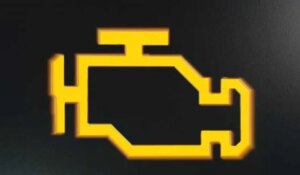If you’re reading this, it’s safe to assume you’re worried there may be some water damage to your engine.
This article will examine everything you need to know about hydrolocked engines. including
- How your car engine works – very briefly
- What is a hydrolocked engine?
- What causes a hydrolocked engine?
- The amount of damage that can be caused
- Hydrolocked engine symptoms
- Hydrolocking repair costs
- Does insurance cover hydrolocking?
- Does a warranty cover hydrolocking?
- How to prevent hydrolocking in the future
How Does a Combustion Engine Work?
In straightforward terms, Your car engine, diesel or petrol, works by igniting a combination of fuel and air in the combustion chambers. These explosions force the pistons in the engine down, and that’s what powers the car.
All engine components are under great force and work within very fine limits. A massive amount of damage can be done if these limits are breached by a mechanical failure or other elements entering the engine.
What Is a Hydrolocked Engine?
Hydro means water, and locked means seized. In essence, water has entered the engine – where it isn’t normally meant to be – and caused the engine to stop working.

Most engines are cooled by water, but normally it never enters the cylinders. This area is reserved for fuel and air.
What Causes A Hydrolocked Engine?
As we’ve mentioned above, hydrolocking is caused by water entering the engine. But how does water get into the engine?
If your vehicle is parked during a flood, and the water rises above the position of the engine air manifold, water will get into the engine.
Also, if you’re driving through a flood, you risk water being sucked into the engine. This depends on the depth of the water – I know, sorry, it’s obvious – but also on the position of your car’s air intake.
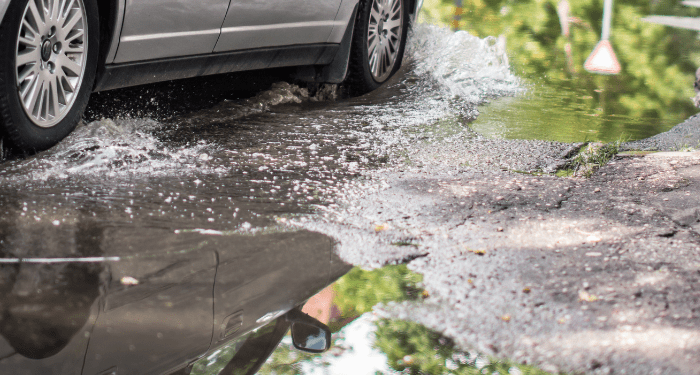
The position of the air intake varies depending on the car model.
Cars with a bigger clearance underneath are less likely to get hydrolocked than sports cars.
The damage caused by water entering the engine can range from draining the water away and replacing filters and spark plugs to a complete engine rebuild.
How Much Damage Can Hydrolocking Cause An Engine?
This depends on two factors.
Firstly how much water has entered your engine and how long the engine was on for – if at all – after the water entered it.
- The best-case scenario is that the car was parked, and the level of water didn’t rise high enough to enter the combustion chamber.
- If the water rose higher and entered the combustion cylinders themselves, then unless your engine has sat in water for many days, it’s not likely to be corroded, and there should again be fairly minor damage.
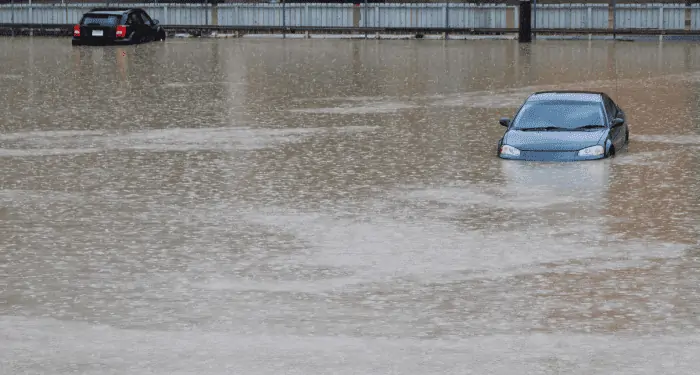
- If your engine was running at low revs or idle when the water entered the engine, a lot of damage could be caused to the piston rings. The good news is that the cylinders wouldn’t have tried to compress water for too many cycles at low revs. Potentially it isn’t good, but you might get lucky.
- If the engine was running at high revs – perhaps in a lower gear – to ease through a flooded section of road, this could be very bad. Higher revs mean more compressions attempted by the cylinder and a possibly catastrophic fail.
5 Hydrolocked Engine Symptoms
All the symptoms are severe. There is no subtlety with an engine that’s waterlogged.
Stalling
If you’ve driven through a flood, the car will likely stall as water enters the cylinders.
However, this could also happen if the floodwater has shorted the electrical circuits in your car. That would be preferable to hydrolock.
Once dried, the circuits may work again; even if not, it can be swapping one circuit out for a new one.
Engine Won’t Turn Over
If your car has been parked in deep floodwater and you’ve just returned to it, or you’ve driven through deep water and it’s stopped, don’t try and start it.
The temptation will be there to try and get it going and save on the cost of a tow and an inspection. However, forcing your engine to turn with water-filled cylinders may cause thousands of dollars worth of damage.
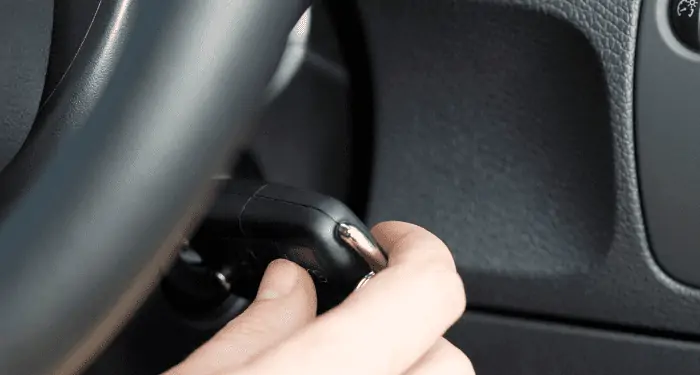
A Loud Bang or Thump Noise
Water does compress, but it takes much more force than your engine can provide. When you have water in your engine, the pistons will continue to try to extend to their full range. The water prevents this from happening and causes the piston(s) to fail. You’ll hear a loud thump or bang if this happens.
Engine Knocking Noise
A knocking noise indicates a problem with a piston, or more likely, you’ve now got a bent connecting rod. Either way, it’s a warning to stop right away before you cause more damage. It’s a better noise than a bang or thump, but only if you take heed and get it inspected ASAP.
Engine Spluttering/Water leaving the Exhaust
If your engine has a smaller amount of water in it, it may still work but not as it should. The excess water will stop your engine from burning the fuel and air effectively, but it may still run and force water out of the tailpipe with the exhaust gases.
Hydrolocked Engine Repair Costs
As water can’t be compressed inside an engine the pressure rises quickly and can cause the cylinders to blow. If you’re lucky you might get away with a drain of the water, new plugs and oil, and a new cover gasket. This can cost roughly $500.
More severe engine damage to the connecting rods and valves – usually caused by driving through water in a low gear until the car stalled – will likely result in a brand new or remanufactured engine being needed. Expect to pay $7,000 for a brand-new engine. This depends on the make and model of the car and whether you take your car to a car shop or back to the dealership.
How To Fix A Hydrolocked Engine
This depends on whether the engine was running when it took in the water.
If the engine were off when it flooded, there would be less damage. Often the water can be drained out. If you’re a decent DIY mechanic, you may feel confident attempting this.
Remove the spark plugs – all of them – and run the starter motor. This should be enough to force the water out of the cylinders. Next is to refit the spark plugs – once you’ve dried them – or buy new ones. Drain the oil as it’s going to be contaminated and change to new oil.
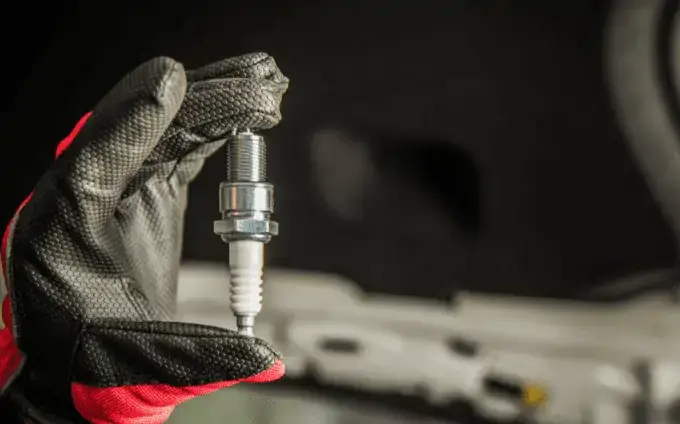
If the engine was running when it became hydrolocked, it’s best to get it stripped down by a mechanic as there may be damage that isn’t yet apparent.
The force used by the piston trying unsuccessfully to compress water will often cause the connecting rod to bend.
It might only be a few millimeters, but after a few weeks, it’ll worsen. You’ll know as you hear the knocking noise of it banging away in your cylinder head.
Make sure you get a guarantee of the work done at a car shop. Some may drain the water without noticing or looking for any underlying issues. It’s not unusual for a car driven through floodwater to be back with a mechanic two weeks after being drained with a knocking noise.

If in doubt, spend the extra money getting the engine stripped to check for damage the first time. A rogue connecting rod can ruin the whole engine resulting in a new engine being needed.
Hydrolocked Diesel Engines
Diesel engines are more susceptible to hydrolocking than petrol cars. A diesel car engine works at much higher compression levels, and because of this, the chambers are also smaller.
Consequently, it takes less water to hydrolock diesel engines.
Hydrolocked Rotary Engines
Although rotary engines aren’t that common, they are different enough to have their section—Mazda RX-8, Audi A1, and AMC Pacer, to name three rotary engine cars.
It isn’t easy to hydrolock a rotary engine. To start with, they require less compression than a normal petrol or diesel engine. Less compression means less force being placed on the pistons.
The seals also have spring release, which means they’ll release it if there is a pressure build-up.
I’m pretty sure rotary engines weren’t invented to make hydrolocking less likely. A nice bonus, though, if you own a car with one.
Can Electric Cars Become Hydrolocked?
There is no combustion engine, so electric cars can’t be hydrolocked. However, electric cars are powered by lithium batteries that don’t react well in water and may short out.
What If Your Hydrolocked Car Is Totaled?
Often the cost of a major engine repair or brand new engine is uneconomical. Also, you’ll be without your car for more than two weeks if the engine needs to be rebuilt.
To many people in this situation, it makes better sense to sell the car to a salvage buyer or a junk car buyer and get enough money to use as a deposit for another car.

Does Warranty Cover A Hydrolocked Engine?
New car warranties will always exclude hydrolocking. I’ve never known any car manufacturer to include it.
If you have a powertrain warranty, you might have a slim chance of being covered, but again unlikely.
The argument will always be that the driver’s fault – if they went through a flood – that the engine is seized.

Does Insurance Cover a Hydrolocked Engine?
You’ll need to have a good read of your policy and the conditions and exclusions.
Generally, the more comprehensive the policy, the more likely it’ll be included.
This can be excluded from claims where a car has been driven through a flood. Cars flooded out due to rising water and not driven are usually accepted.
As insurance companies know they are costly repairs to fund, expect a very high excess on these claims – the money you’ll have to pay to the car shop.
How to Prevent Hydrolocking
- If you come across a flooded road and there is another route, take it.
- If possible, test the depth of the water before driving through.
- If you have to drive through it, drive slowly.
- If you are aware of heavy rain and the risk of flooding, park your car in a higher area of town.
- If you suspect your engine is flooded, don’t turn the key and risk it; get towed instead.





